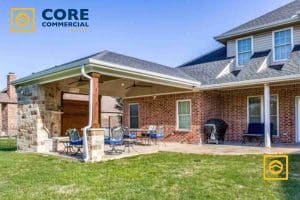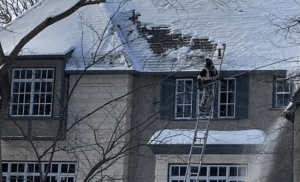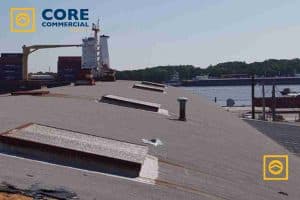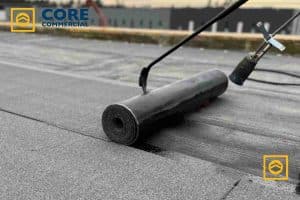Living in Texas means dealing with intense summer heat, glaring sun, and rising energy bills. The extreme temperatures don’t just affect comfort, they also damage your roof, overwork your HVAC system, and inflate utility costs. Luckily, modern reflective coating technologies offer real solutions. These coatings bounce solar heat away from your home or building, keeping interiors cooler and reducing energy usage. In this article, you’ll discover five of the most effective reflective coating solutions to beat the Texas heat. We’ll break down how each one works, where it performs best, and how it can benefit you, not just your property.
Why Reflective Coatings Matter in Texas
Heat Isn’t Just Uncomfortable – It’s Expensive
Texas is one of the hottest states in the U.S., with average summer temperatures frequently topping 100°F. That kind of heat doesn’t just make you sweat, it drives up your air conditioning use, increases strain on your HVAC system, and significantly raises energy costs.
Reflective coatings help solve this by reflecting UV rays and infrared radiation, reducing roof surface temperatures by as much as 60°F. That translates to cooler interiors and lower bills, especially in high-use months like July and August.
What Are Reflective Coatings?
Reflective coatings—also called cool roof coatings—are specialized materials applied to roof surfaces. They’re designed to reflect sunlight and reduce heat absorption. Most are white or light-colored, but some now come in tinted versions for better aesthetics without losing efficiency.
1. Silicone-Based Reflective Coatings
What They Are
Silicone coatings are moisture-cured, rubber-like substances that create a seamless membrane across your roof. They’re highly UV-resistant and ideal for extreme climates like Texas.
Why Texans Love Them
- Great for flat and low-slope roofs: Common on Texas commercial and industrial buildings.
- Performs in humid and wet areas: Works even during Gulf Coast storm seasons.
- Requires fewer coats: Reduces labor and installation time.
Key Benefits
- Reflects over 85% of solar energy.
- Extremely durable—lasts 15 to 20 years with minimal maintenance.
- Handles ponding water, which is a problem for many Texas roofs.
Best For
- Commercial buildings in Houston, Dallas, and Austin.
- Homeowners are looking for long-term performance in both heat and storm conditions.
2. Acrylic Reflective Roof Coatings
What They Are
Acrylic coatings are water-based and budget-friendly. They’re known for their excellent UV resistance and ease of application.
Why It’s Popular in Texas
- Low cost per square foot: Attractive to homeowners and landlords alike.
- High solar reflectivity: Keeps roofs cooler, especially during peak summer.
- Environmentally friendly: Low VOCs and recyclable.
Key Benefits
- Reduces indoor temperatures by 10–15°F.
- Helps lower cooling costs by 20–30%.
- Simple to recoat when needed—every 5 to 7 years.
Best For
- Homes with shingle or metal roofs in suburban neighborhoods like Plano, Round Rock, and Sugar Land.
- Multi-family residences where budget and comfort matter equally.
3. Polyurethane Coatings
What They Are
Polyurethane coatings offer exceptional impact resistance and weather protection. They come in two types: aliphatic (top layer) and aromatic (base layer).
Why Texans Choose This Option
- Handles physical wear: Excellent for roofs that see foot traffic or heavy equipment.
- Resists hail and debris: Essential in tornado-prone areas and storm corridors.
Key Benefits
- High reflectivity with a glossy, attractive finish.
- Extremely strong—ideal for storm-prone regions.
- Resists dirt buildup, so it stays reflective longer.
Best For
- Warehouses, manufacturing facilities, and schools.
- Areas around Fort Worth, Amarillo, and San Antonio with higher storm activity.
4. Elastomeric Roof Coatings
What They Are
Elastomeric coatings are stretchable materials that adapt to roof expansion and contraction caused by Texas’s fluctuating temperatures.
Why They’re Perfect for Texas
- Thermal flexibility: Doesn’t crack or peel when the roof expands under heat.
- Ideal for older roofs: Seals leaks and extends roof life.
Key Benefits
- Reflects up to 90% of solar radiation.
- Lowers roof surface temperature by 50–60°F.
- Extends roof life by 10+ years.
Best For
- Older homes and historic buildings in cities like San Marcos, El Paso, and Denton.
- Roofs that need sealing but aren’t ready for full replacement.
5. Aluminum Reflective Coatings
What They Are
These coatings are made with asphalt and embedded aluminum flakes. While not as bright white as others, they still provide strong reflectivity and water resistance.
Why Some Texans Prefer Them
- Traditional choice: Especially in rural areas and on metal barns or trailers.
- Adds waterproofing: Great for protecting against rain and leaks.
Key Benefits
- Reflects sunlight and heat while sealing the roof.
- Adds a silvery finish that many find visually appealing.
- Affordable for large surface areas.
Best For
- Farm structures, sheds, and mobile homes in places like Lubbock, Abilene, and Waco.
- Budget-conscious owners looking for a combo of reflectivity and waterproofing.
Choosing the Right Coating for Your Texas Property
Factors to Consider
- Roof type: Flat, metal, shingle, or tile? Some coatings are more effective on specific surfaces.
- Climate zone: Texas has dry deserts, humid coasts, and storm-prone regions.
- Budget vs. longevity: Silicone lasts the longest, but acrylic is more affordable.
- Maintenance capacity: Some need more frequent recoating or cleaning than others.
Quick Comparison Table
| Coating Type | Reflectivity | Lifespan | Best For |
|---|---|---|---|
| Silicone | ★★★★★ | 15–20 years | Flat roofs, Gulf Coast |
| Acrylic | ★★★★☆ | 5–10 years | Homes, rentals |
| Polyurethane | ★★★★☆ | 10–15 years | Industrial, hail-prone areas |
| Elastomeric | ★★★★★ | 10+ years | Older buildings, shifting roofs |
| Aluminum Asphalt | ★★★☆☆ | 5–10 years | Rural barns, metal structures |
Real-World Benefits for Texans
Lower Cooling Bills
Homeowners report savings of 15–30% on cooling costs after installing reflective coatings. Over several summers, that adds up to thousands of dollars.
Cooler Living Spaces
Even with AC, rooms under uncoated roofs often feel hotter. Reflective coatings keep those areas 10–15°F cooler without extra cooling power.
Less Wear on HVAC Systems
By keeping your home naturally cooler, you reduce stress on your AC unit, which in turn cuts down on repairs and lengthens the system’s lifespan.
Extended Roof Life
Reflective coatings act as a shield, protecting against UV, moisture, and mechanical wear. That means you won’t need to replace your roof as often.
Final Thoughts: Beating the Texas Heat Starts on the Roof
If you’re tired of sweating through the summer, dreading your energy bill, or watching your roof bake under the sun. A reflective coating could be the smart, simple commercial roof solution you’ve been looking for. With options for every budget, building type, and climate region in Texas, there’s no reason to keep living under a heat trap. A reflective coating won’t just cool your home, it will protect your investment, lower your bills, and make your Texas summers a lot more bearable.
FAQs
How do reflective roof coatings help in Texas heat?
Reflective coatings, often called cool roof coatings, are designed to bounce UV rays and infrared radiation away from your building, reducing roof surface temperatures by as much as 60°F. This reduction significantly lowers heat transfer into the interior, making them a critical defense against Texas summers where temperatures frequently exceed 100°F.
What is the best reflective roof coating for Texas?
The best choice depends on your specific location and roof type; Silicone is excellent for humidity and ponding water in the Gulf Coast, while Polyurethane is superior for hail-prone areas. Core Commercial Roofing & Coatings can assess whether your property needs the impact resistance of Polyurethane or the budget-friendly UV protection of Acrylic to best combat the local climate.
How long do reflective roof coatings last in Texas?
Lifespans vary by material, with Silicone coatings typically lasting 15 to 20 years and Acrylic options lasting 5 to 7 years before needing a recoat. Core Commercial Roofing & Coatings recommends high-durability options like Elastomeric or Silicone for long-term commercial applications to minimize maintenance frequency in harsh Texas weather.
Can reflective coatings lower my energy bills?
Yes, by reflecting over 85% of solar energy, these coatings can reduce indoor temperatures by 10–15°F, which directly translates to a 15–30% reduction in cooling costs. This efficiency is particularly valuable during peak usage months like July and August, helping to offset the high price of electricity in Texas.
Are reflective roof coatings good for Texas homes?
Absolutely, especially Acrylic Reflective Roof Coatings, which are a cost-effective solution for shingle or metal roofs in suburban areas like Plano and Sugar Land. They provide high solar reflectivity that keeps living spaces cooler without the high expense of commercial-grade industrial coatings.
Do reflective coatings work on metal roofs in Texas?
Aluminum Reflective Coatings are specifically beneficial for metal roofs, such as those on barns or rural structures in West Texas. These coatings combine asphalt with aluminum flakes to provide a reflective, silvery finish that also offers excellent waterproofing and rust protection for metal surfaces.
How much does reflective roof coating cost in Texas?
Costs vary by chemistry, with Acrylic being the most budget-friendly option and Silicone representing a higher upfront investment for greater longevity. Core Commercial Roofing & Coatings helps property owners evaluate the trade-offs between initial cost and long-term savings, ensuring you select a solution that fits your budget while maximizing energy efficiency.
Can reflective coatings be applied to old roofs?
Yes, Elastomeric Roof Coatings are particularly effective for older roofs because they are stretchable and adapt to the expansion and contraction caused by temperature fluctuations. Core Commercial Roofing & Coatings often applies these to historic or aging buildings to seal leaks and extend the service life of the roof by more than 10 years without a full replacement.
Do reflective coatings help with roof leaks?
Many reflective options, particularly Silicone and Aluminum coatings, act as a seamless waterproof barrier that seals loose seams and hairline cracks. Core Commercial Roofing & Coatings utilizes these materials to fix existing leak points like ponding water areas, effectively turning a cooling upgrade into a restorative waterproofing project.
How can a reflective roof coating help my home?
Beyond lowering energy bills, a reflective coating reduces the thermal load on your HVAC system, extending its lifespan and reducing repair costs. Furthermore, it protects your roof materials from UV degradation and thermal shock, preserving your home’s structural integrity against the intense Texas sun.






